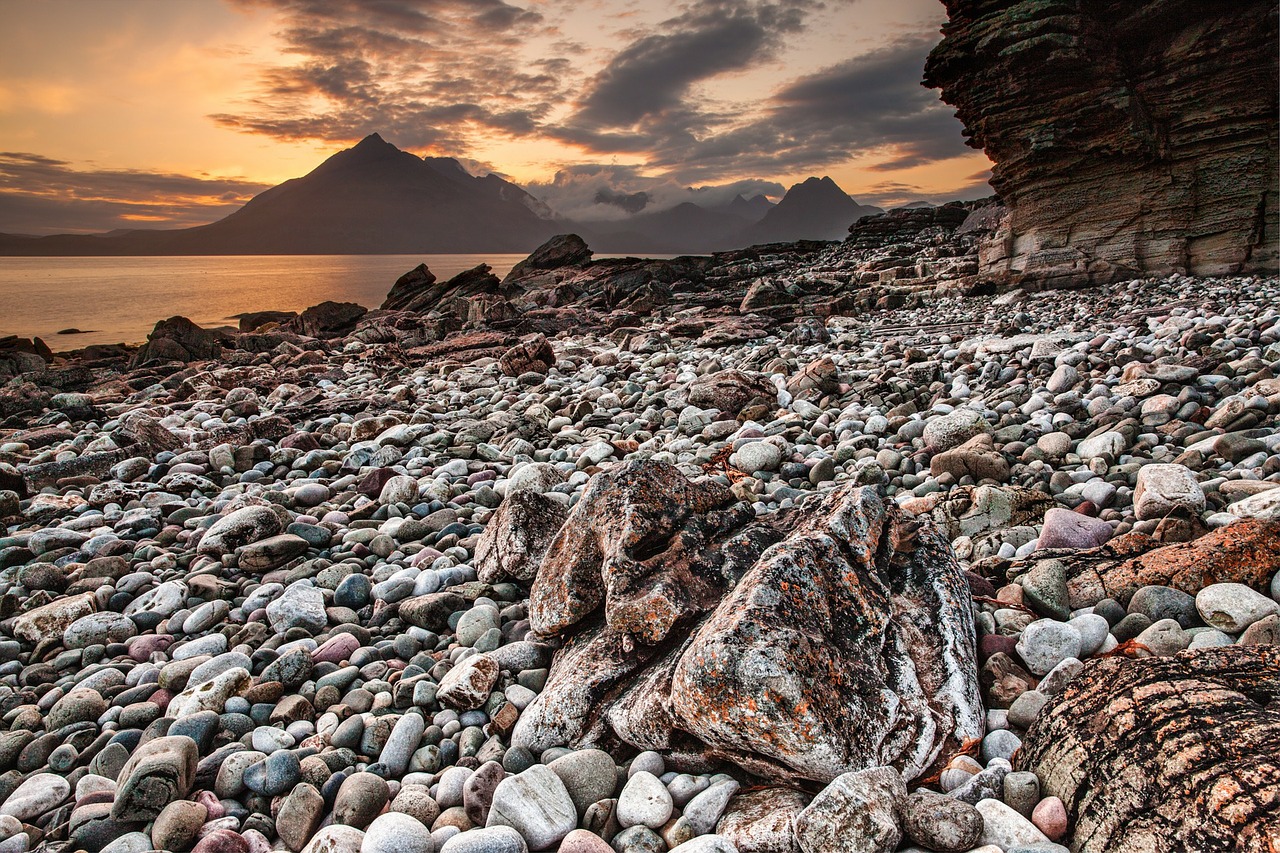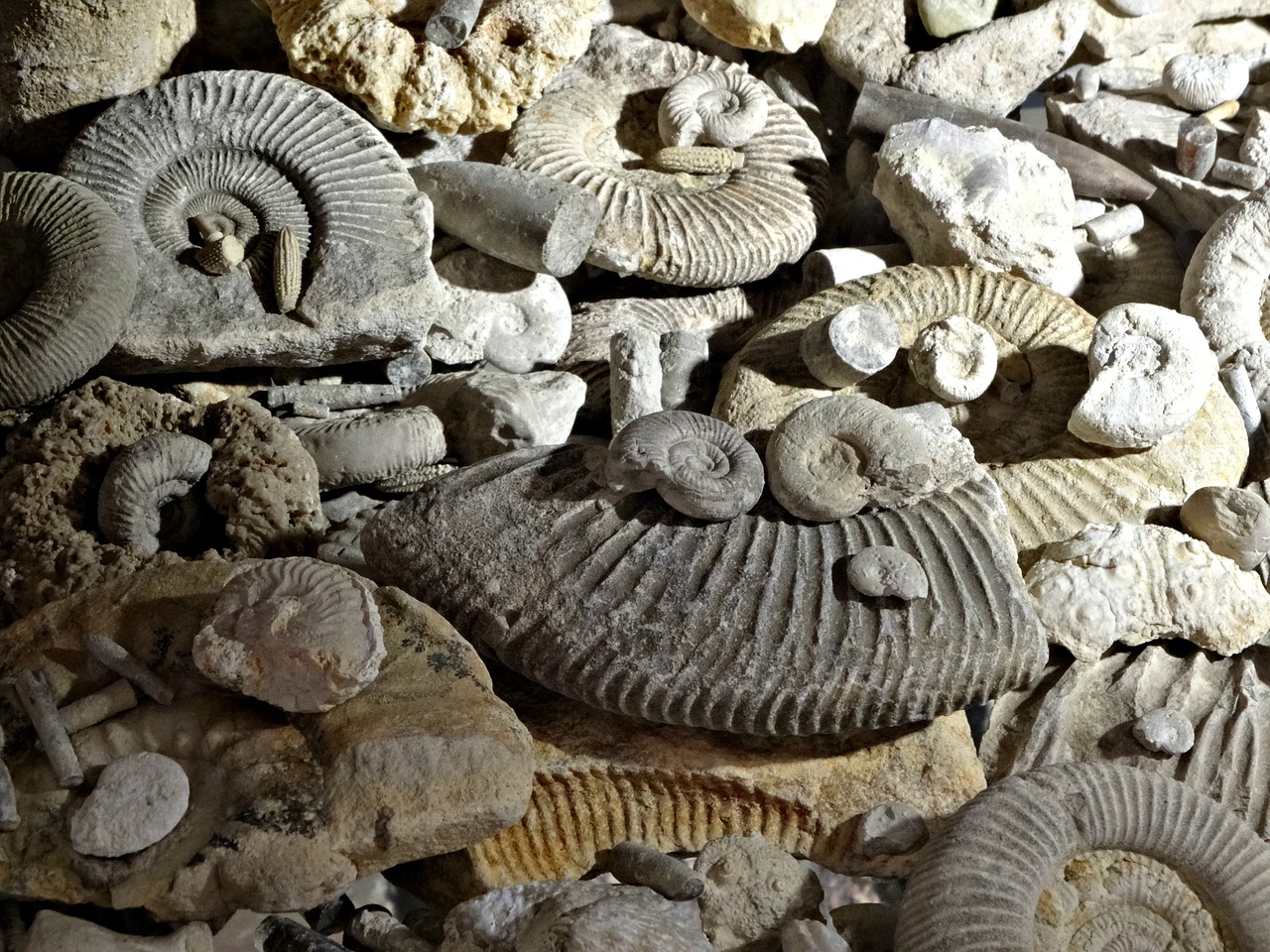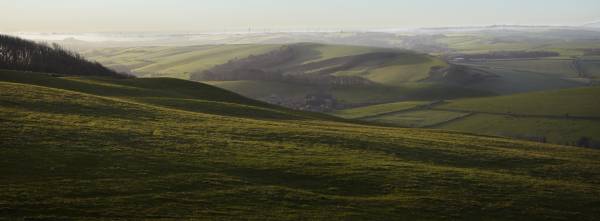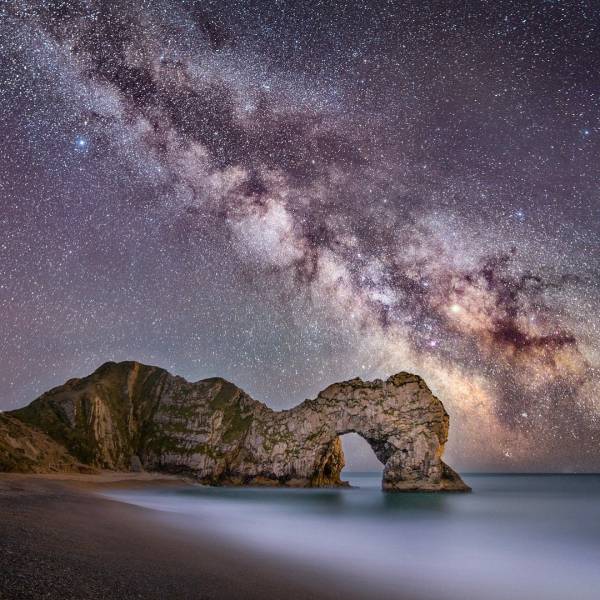back to blog
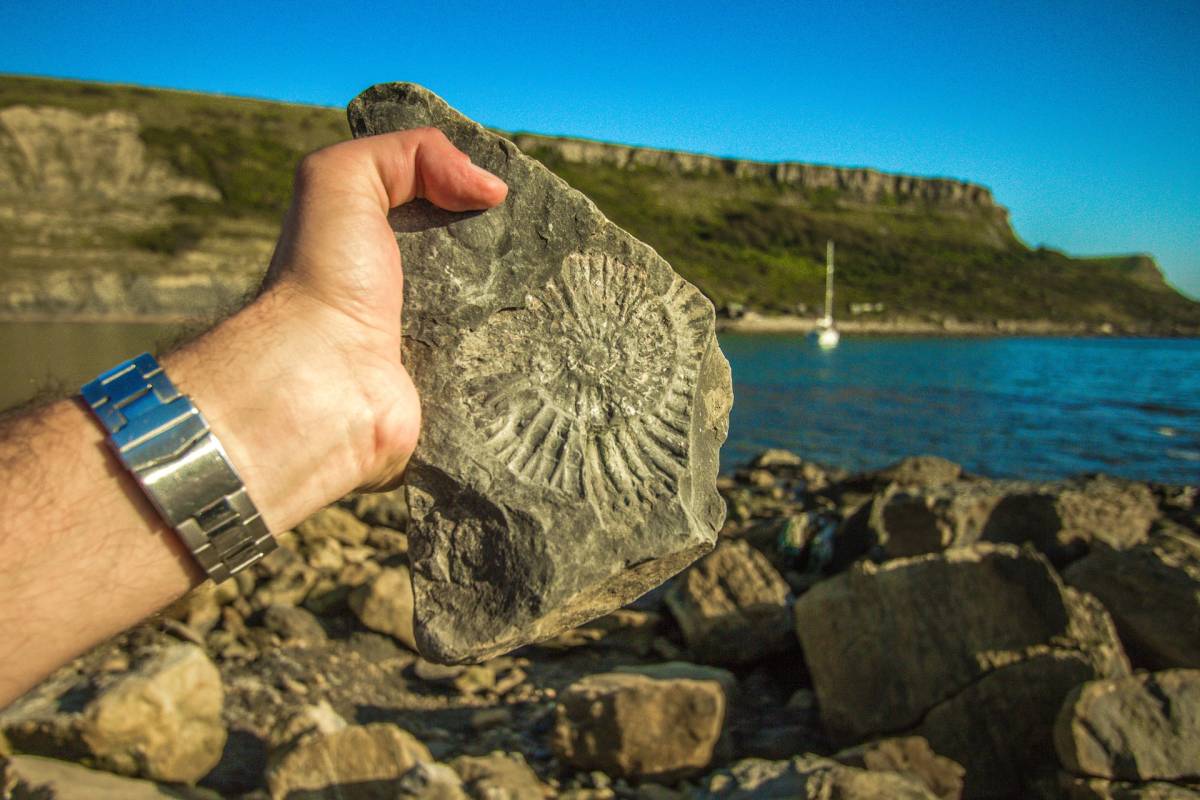
five places for a fossil-hunting adventure
Even if you’re not lucky enough to live by the Jurassic Coast here in Dorset, there are plenty of places around the UK where you can go looking for dinosaurs….
It was Dorset’s own Mary Anning whose fossil finds contributed so much to palaeontology in the the early part of the 19th century. It turned her home town of Lyme Regis into an epicentre of geological discovery. Years later, she even inspired the tongue twister “she sells seashells on the seashore”.
Fortunately, fossil-rich Dorset rocks underlie large areas of the UK – and there are plenty of other places around Britain where you can go on a weekend adventure to look for evidence of dinosaurs. Here are five of our favourite…
1. North Yorkshire Coast
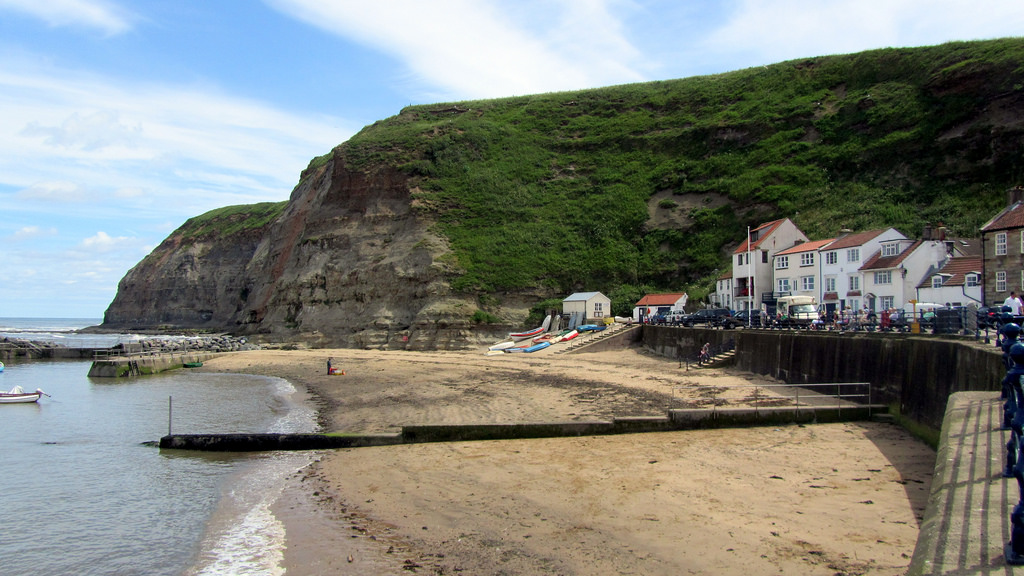
The beach at Staithes – Photo: David Jones
The beaches and cliffs between Scarborough and Staithes are some of the best bits of Jurassic coastline in the country, second only to Dorset’s own, but finding the beaches that others have missed can be a problem. Robin Hood’s Bay is often the first stop, but can be disappointing in high summer as the cliffs need a good winter storm to give up their Jurassic treasures. Whitby, too, can be difficult as you’ll need to plan your visit to avoid the high tide which always covers the beach to the cliff base.
So better alternatives include the villages of Staithes and Port Mulgrave, where you need to do a bit of walking. At Staithes, non-villagers must park at the top of the village and walk down to the harbour. At Port Mulgrave, access is down a very long set of steps, but once there, ammonites, reptilian and plant fossils are found with great frequency.
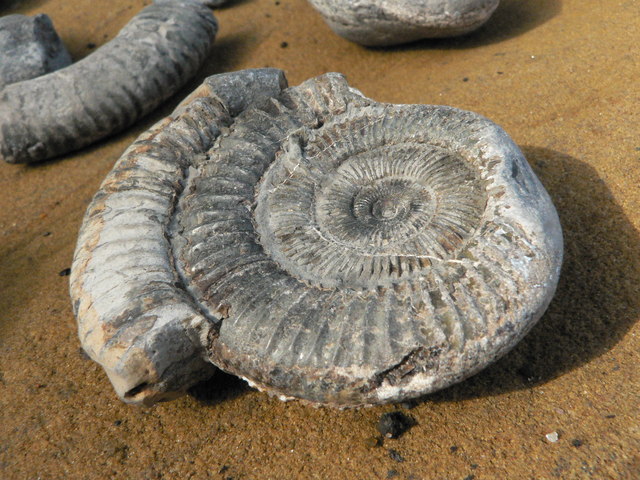
Ammonite at Port Mulgrave – © John Berry via Creative Commons
While you are finding fossils, you may come across treasure of a different kind; the coast around Whitby is an excellent hunting ground for semi-precious jet, actually the fossilised wood of monkey puzzle trees.
2. Helmsdale, Caithness
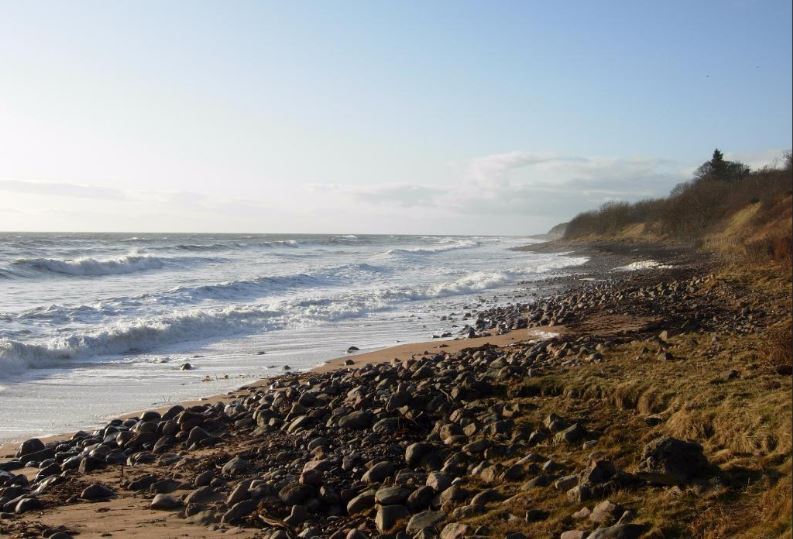
Helmsdale beach. Photo: Ms_Moose.
The beach here has patches of the same Kimmeridge oil shale that runs in bands across cliffs on the Isle of Purbeck at the eastern end of the Jurassic Coast.
The geology of Helmsdale has had scientists scratching their heads for years, but with Jurassic rocks bearing ammonites, belemnites, corals and bits of fish and reptiles, it’s a great place, even before you factor in the possibility of finding even older Devonian-era fish fossils.
3. Elgol, Isle of Skye
Amazing scenery and ample fossils combine to make Elgol a particularly compelling place to visit.
On the shores of the Strathaird peninsula, Elgol has fine views north across Loch Scavaig to the thousand-metre peaks of the Black Cuillin, but a short walk will reward you also with rocks bursting with bivalve fossils and the occasional ammonite.
4. Southerndown, Glamorgan
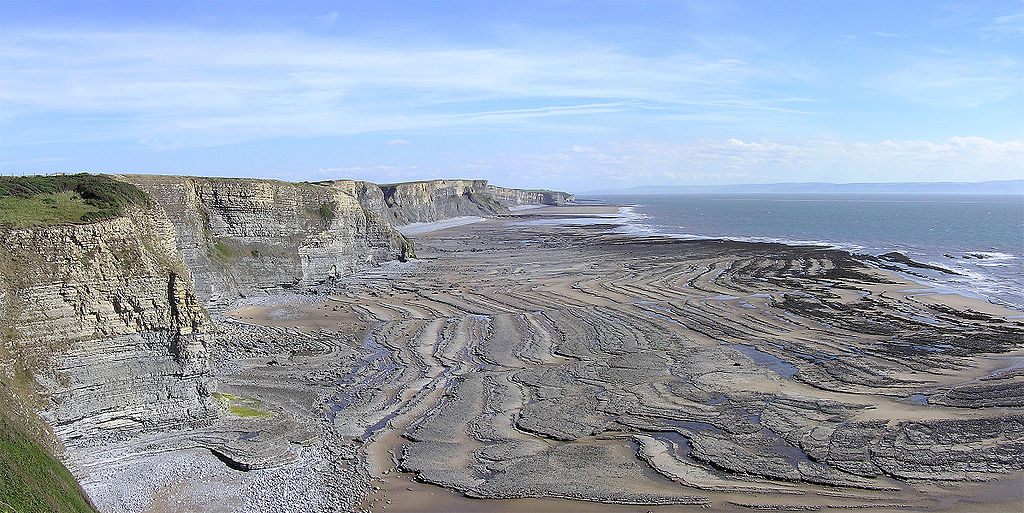
Southerndown beach – Image credit.
An amazing and fascinating family-friendly beach – sandy at low tide, with striking cliffs and plenty to clamber over and explore. There’s a car park, snack and drink huts and toilets, plus a free garden to wander around if the tide’s too high.
It all looks a bit like a Dr Who film shoot (given its location in South Wales, that’s quite likely), but who needs a Tardis for time travel with all of the ancient life you’ll discover, thanks to the rock falls from its crumbling, Jurassic cliffs. Fossil hunting is easy – you would be unlucky to leave without at least a bivalve or two.
5. Whitecliff Bay, Isle of Wight
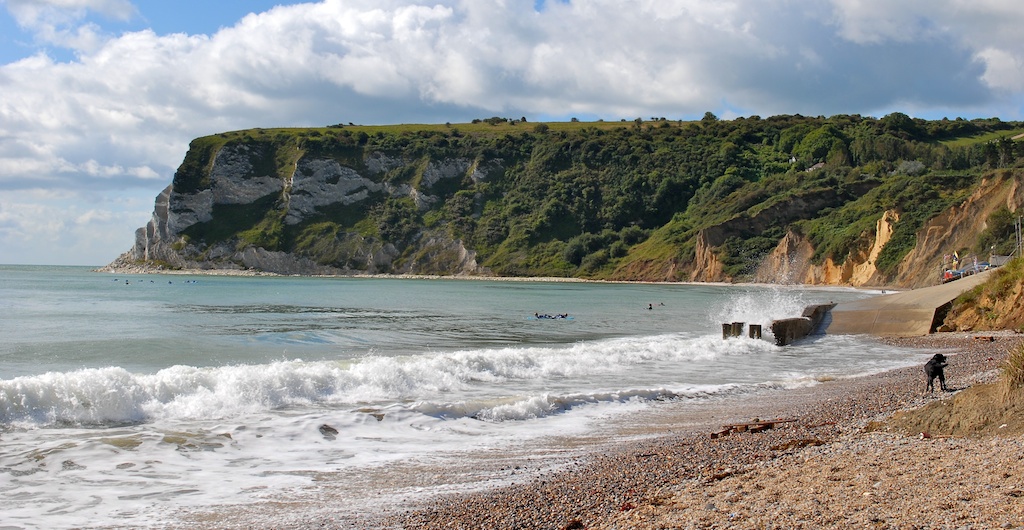
The beach at Whitecliff Bay. Image credit.
It’s not called Dinosaur Isle for nothing – over 20 species have been identified in fossils from the island and it is commonly regarded as one of the richest dinosaur discovery areas in Europe. A visit to the Isle of Wight would appeal to anyone in search of the kind of seaside holiday they might remember from their childhood. This small island is also one of the best places in Britain to search for Cretaceous-era fossils.
Close to the island’s eastern headland, near Bembridge, Whitecliff Bay is something of a geological Mecca, despite the fact that most of its rocks were formed after all the dinosaurs (and ammonites) became extinct. All the rock strata have been contorted from the horizontal to nearly vertical here, so heading from east to west, you can travel back in time from 25 to 65 million years ago in only half a mile.
Fossils to be found here include ammonites, various marine shells, sponges, belemnites and echinoids -– fossilised sea-urchins. There are cafes and toilets where you park the car and a clean, sandy beach awaits this most family friendly location.
Fossil-hunting tips
1. Take a fossil-hunting kit including a camera, toothbrush for removing mud and a magnifying glass.
2. Special geological hammers can help you break open rocks, but always wear safety glasses. And don’t use them at all unless you’re authorized to do so (the National Trust asks you not to use hammers on its beaches).
3. If you find something unusual or interesting, take it to a local museum or heritage centre so that it can be shown to an expert, in case it’s scientifically important (you’ll still get to keep the fossil!)
4. Check tide times, weather conditions and never attempt to remove fossils from cliffs. Tell someone where you’re going and for how long, and remember your mobile phone.
5. For more tips and safety advice, read the Ordnance Survey and National Trust guides to fossil hunting.

